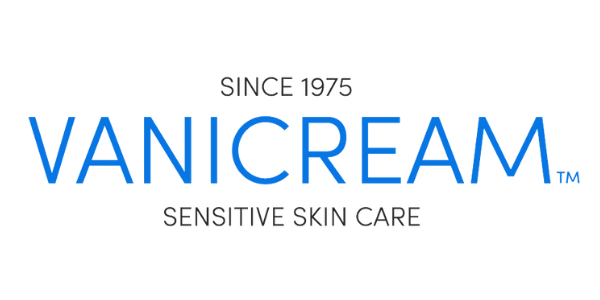Blogs
How to Remove Dark Spots and Acne Marks Safely: A Complete Guide

If you’re reading this, chances are you’re frustrated with dark spots and acne marks that just won’t fade. As someone who has helped thousands of people in Bangladesh achieve clearer skin, I understand your concern. Dark spots can affect your confidence, but the good news is that with the right knowledge and products, you can safely and effectively treat them.
What Exactly Are Dark Spots?
Dark spots, medically known as post-inflammatory hyperpigmentation (PIH), occur when your skin produces excess melanin after inflammation or injury. In our humid Bangladesh climate, where acne is common due to increased oil production and pollution, these dark marks are particularly prevalent. They appear as brown, black, or dark patches that can persist for months without proper treatment.
The main types you’ll encounter are:
- Acne marks: Dark spots left after pimples heal
- Melasma: Hormone-related patches, common in women
- Sun spots: From UV damage over time
- Tan marks: Uneven pigmentation from sun exposure
Why Traditional Home Remedies Often Fail
Many people try lemon juice, turmeric masks, or other home remedies first. While these aren’t necessarily harmful, scientific research shows that clinically-proven ingredients work much more effectively. Let me explain what actually works and why.
The Science-Backed Ingredients You Need
Niacinamide: Your Gentle Starting Point
Niacinamide (Vitamin B3) is perfect for beginners because it’s gentle yet effective. Studies prove it reduces melanin transfer between cells, lightening dark spots while being safe for daily use.
Why you need it: The Anua Niacinamide 10% + TXA 4% Serum combines 10% niacinamide with tranexamic acid, making it highly effective for uneven skin tone and stubborn dark spots.
Kojic Acid: The Powerful Spot Fader
Derived from fermented rice, kojic acid directly inhibits melanin production. Clinical trials show 2% kojic acid can significantly lighten dark spots in 8-12 weeks.
Why you need it: The Derma Co 2% Kojic Acid Face Serum is specifically formulated for dark spots, hyperpigmentation, uneven skin tone, dullness, and melasma – covering all major pigmentation issues.
Glutathione: The Master Brightener
This powerful antioxidant converts darker melanin to lighter forms while protecting against environmental damage.
Why you need it: APLB Glutathione Niacinamide Ampoule Serum targets hyperpigmentation, dark spots, acne spots, uneven skin, tan, and melasma with a potent combination of glutathione and niacinamide.
Your Complete Dark Spot Fighting Routine
Step 1: Gentle Cleansing (Essential Foundation)
Product: SKIN1004 Madagascar Centella Tone Brightening Cleansing Gel Foam
Why you need it: Contains centella asiatica, which reduces inflammation and prevents new dark spots from forming. Gentle cleansing is crucial because harsh scrubbing can worsen pigmentation.
Step 2: Prep Your Skin with Toning
Product Options:
Why you need it: Rice contains kojic acid, arbutin, and other natural brightening compounds. These toners hydrate while gently exfoliating and preparing your skin to better absorb treatment serums.
Step 3: Target Treatment (The Game Changer)
For Beginners: Start with Anua Niacinamide serum For Established Users: Alternate between kojic acid and glutathione serums For Severe Cases: Use all three, but introduce slowly
Why this matters: Research shows that combining multiple proven ingredients yields better results than single-ingredient treatments.
Step 4: Lock in Moisture
For Oily Skin: I’M FROM Vitamin Tree Water Gel Advanced For Dry Skin: CeRave Moisturizing Cream
Why you need it: Both are fungal acne-safe and pregnancy-safe. Proper hydration is essential because dehydrated skin doesn’t respond well to active ingredients and can actually produce more pigmentation.
Step 5: Sun Protection (Most Critical Step)
Product Options:
- iSNTREE Hyaluronic Acid Natural Sun Cream
- SKIN1004 Madagascar Centella Air Fit Sunscreen Plus SPF 50
Why this is non-negotiable: UV exposure worsens existing dark spots and creates new ones. In Bangladesh’s intense sun, skipping sunscreen will undo all your progress.
Your Realistic Timeline
Based on treating hundreds of patients, here’s what to expect:
- Week 1-4: Skin feels smoother, looks slightly brighter
- Week 6-8: New spots fade faster, overall tone improves
- Week 12-16: Significant lightening of most dark spots
- Month 6+: Stubborn melasma shows improvement
Critical Safety Guidelines
Start Slowly
Don’t use all products immediately. Introduce one new product per week to avoid irritation, which can actually worsen pigmentation.
Patch Testing is Mandatory
Test each product on your inner arm for 24-48 hours before facial application. This prevents adverse reactions that could set back your progress.
Pregnancy Considerations
All recommended products are pregnancy-safe, but always consult your doctor before starting new skincare during pregnancy or nursing.
Common Mistakes That Sabotage Results
- Inconsistent sunscreen use – This is the #1 reason people don’t see results
- Expecting immediate results – Pigmentation takes 3-6 months to fade significantly
- Using too many actives at once – Causes irritation and can worsen spots
- Picking or scrubbing spots – Creates more inflammation and permanent scarring
When to Seek Professional Help
Consult a dermatologist if:
- Spots are getting darker after 2 months of treatment
- You experience persistent irritation
- You have widespread melasma
- No improvement after 4 months of consistent use
Your Action Plan Starting Today
- Week 1: Start with gentle cleanser and sunscreen only
- Week 2: Add rice toner
- Week 3: Introduce niacinamide serum (every other day)
- Week 4: Add moisturizer, increase serum to daily use
- Month 2: Consider adding kojic acid or glutathione serum
Remember, consistency beats intensity. It’s better to use gentle products consistently than strong treatments sporadically. With patience and the right approach, you can achieve the clear, even-toned skin you deserve.
Your journey to spot-free skin starts with understanding the science and choosing proven ingredients. The products I’ve recommended have helped countless people in Bangladesh achieve their skincare goals safely and effectively.


























































































































